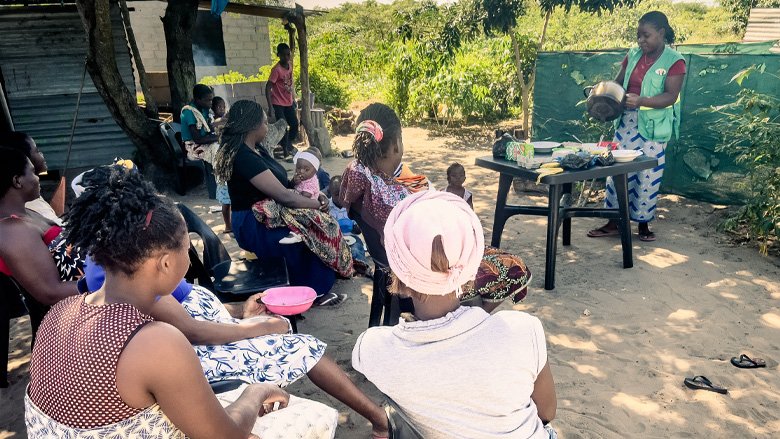Results
- Mozambique more than doubled its workforce of trained and active community health workers – from 3,380 in 2018 to 8,300 in 2022
- The number of technical health staff assigned to primary care services went up by one-third, reaching 22,086 in 2022.
- The project expanded community access to health services from 1.7 million households to 3.6 million, leading to more home visits and community gatherings on critical health topics, and improving health outcomes.
- Almost 6 million skilled deliveries at birth were facilitated between 2017 and 2022 by enhancing healthcare access and quality of primary care services
The Challenge
In low-income countries, formal health systems are stretched thin, and rural and underserved areas often lack adequate primary healthcare coverage, delaying essential interventions and leaving populations vulnerable to preventable diseases. Mozambique was no exception. The country had particularly poor health outcomes among its peers, with high rates of stunting (40%) and malnutrition, as well as one of the highest rates of child marriage and adolescent fertility in the world. Its share of deaths from communicable diseases and maternal, perinatal, and nutritional conditions was 62% – three times the global average. Only half of births were attended by a skilled professional, and the neonatal mortality rate was 27.9 per 1,000 live births. But the problem went beyond reach and access: providers had weak competencies, clinical guidelines were often not adhered to, and there were high levels of dropout for child immunization. To improve health outcomes, Mozambique would have to increase both coverage and quality of service.
WBG Approach
For twenty years, the World Bank has supported Mozambique’s efforts to improve its healthcare system. From 2018–2023, interventions through the Mozambique Primary Health Care Strengthening Program improved the coverage and quality of primary health care services, as well as the financial sustainability and stewardship of the health system. The effort targeted outcomes, using a Program‐for‐Results model: A disbursement-linked indicator incentivized the delivery of sexual reproductive health information and services in secondary and technical schools, and the project facilitated the introduction of performance scorecards in district hospitals, which received additional funds based on agreed results.
A key component was training and deploying community health workers (CHW), especially in rural and underserved areas. These workers bridge the gap between communities and formal health facilities, providing basic care, health education, and timely referrals. One of the sector’s challenges had been low worker motivation, accountability, and knowledge. Under the project, CHWs were trained on basic clinical skills, health promotion, and digital data collection, and their roles were formalized (with salaries and career pathways) to boost retention and professional growth.
